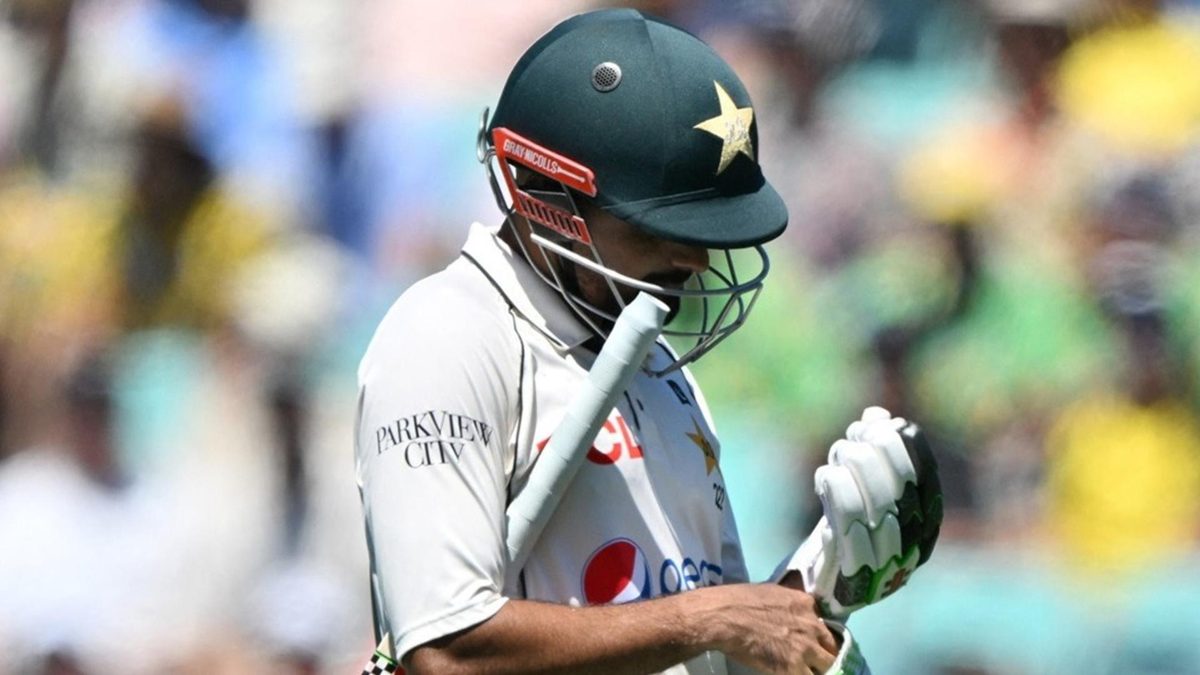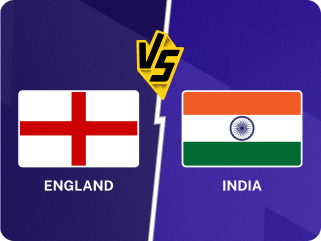
The whys and hows are difficult to explain, but the benchmark set by the Fab Four has been moving away from Babar Azam for some time, writes Abhishek Mukherjee.
That cover drive. You know the one we are talking about. The arc of the bat that threatens to transform the biomechanics-driven craft of batting into sublime artistry. That, and the many other strokes that make one wonder whether it is possible to improve upon him.
Then you skim the records. A batting average of 45.32 is not too bad, you tell yourself. That is the Alastair Cook, Justin Langer, Conrad Hunte, Mohammad Azharuddin, Martin Crowe, Gary Kirsten, Rohit Sharma territory of batting averages. This is a bowling era, so what is the big fuss?
But you already know that, do you not? Babar started the 2022/23 home series against New Zealand with a familiar 161. Flat pitch, yes. The Test was drawn,yes. But 161 is a lot of runs as well, especially if it comes after 390 runs at 78 against Australia at home, 271 at 67.75 in Sri Lanka, and 348 at 58 against England at home.
Babar was scoring a lot of runs back then, but nothing after that 161. That score still ensured his series aggregate stayed at 226 runs at 56.50, but he has not reached 50 since. That streak has now extended to 20 months. True, Pakistan do not play a lot of Test cricket, but 13 innings without reaching fifty can be worrying. Remember, we mentioned 45.32? That used to be 49.74 back then.
You see the problem? Babar was threatening to go past 50 and take off in pursuit of 55 – until his career took a U-turn and brought him perilously close to the 45-mark.
You probably know where the problem lies. Babar used to convert his starts into fifties and the fifties into hundreds with relative ease. For perspective, across his first 82 innings, Babar was dismissed for a score below fifty 44 times – a little over once every two innings. Across his last 13, that count reads a cent per cent 13.
Steve Smith’s decision to open batting has not bore fruits yet, but he still averages an astonishing 56.97. Joe Root keeps flirting with the 50-mark, and was at 50.11 at the time of writing. Kane Williamson’s incredible record at home has kept him at 54.98. And despite dropping from 55.10 to 48.12, Virat Kohli has regained form to push his average up to 49.15 yet again.
One may argue that Pakistan play fewer Tests than The Big Three, but they still play six series every WTC cycle – just fewer Test matches per series on an average. And Williamson plays roughly as much as Babar.
Babar’s critics also keep pointing at – rightly – his average away from home. There is truth in that. He does average 65.75 in England, but across eight Tests in Australia, that number reads a measly 25.25. He did score 104 and 97 in consecutive innings there, but that was in 2019/20. Across his other 14 innings, he has only 203 runs at 14.50. The 47.33 in New Zealand is from two Test matches, though they make up for the 36.83 in three Tests in South Africa.
The T20I question
None of the Fab Four has been an express scorer, but neither is Babar. Despite starting after them, Babar has scored roughly at the same pace as three of the Fab Four (and at a rate significantly slower than Kohli’s).
Babar’s scoring rate has been questioned time and again. Fans may point out that he has not done too poorly when compared to the other three, but then, Kohli has retired from T20Is; neither Root nor Smith seems likely to return to the respective national side anytime soon; and while Williamson has not officially retired, he was non-committal about his T20I future after New Zealand’s unceremonious exit from the 2024 T20 World Cup.
Babar, being younger than all four, continues to play. Pakistan do prefer T20I anchors – two of them, in fact – but it does not change the fact that Smith and Root found themselves out of their national sides for scoring at barely above Babar’s pace.
ODI is Babar’s format, yet...
In the history of ODIs, Kohli (13,906 runs at 58.18) is the only one to have scored more runs than Babar’s 5,729 at an average better than his 56.72. Babar is also one behind Saeed Anwar’s Pakistan record of 20 ODI hundreds.
Yet, there are worrying signs. We shall again turn to the same phase, starting 2022/23. After hitting three consecutive hundreds and touch 60 in June 2022, Babar had dropped to 59 but bettered 60 again in January 2023 with five fifty-plus scores on the trot.
But that was it. Across 2023, he made only 1,065 runs at 46.30, while his strike rate of 85 was lower than his career scoring rate of 89. Among the ten batters who hit the 1,000 mark that year, Babar’s strike rate was the worst, while only Will Young and Pathum Nissanka had worse averages.
Pakistan are yet to play an ODI in 2024, but when they do, eyes will be on Babar, especially in the Champions Trophy, the first global tournament Pakistan are expected to host since 1996. To re-establish his credentials as a batter at par with the Fab Four, that is where Babar will have to stamp his legacy.
Follow Wisden for all cricket updates, including live scores, match stats, quizzes and more. Stay up to date with the latest cricket news, player updates, team standings, match highlights, video







